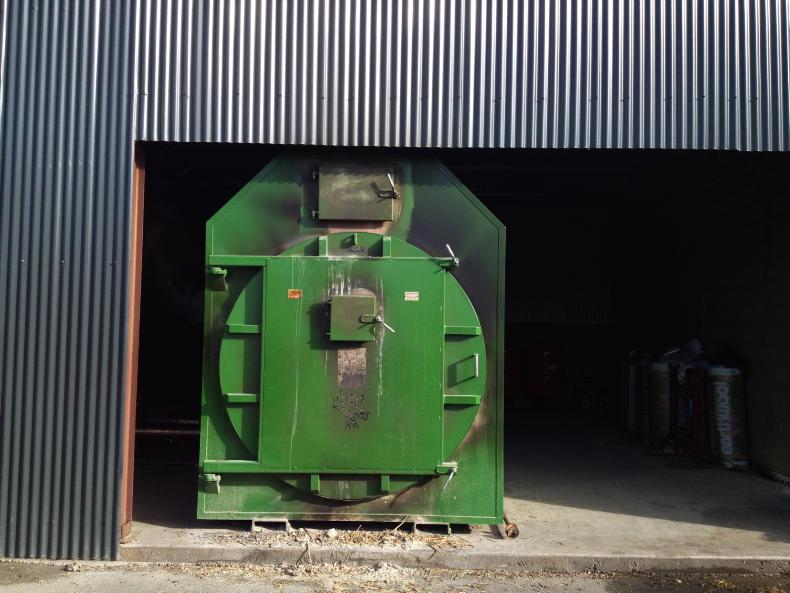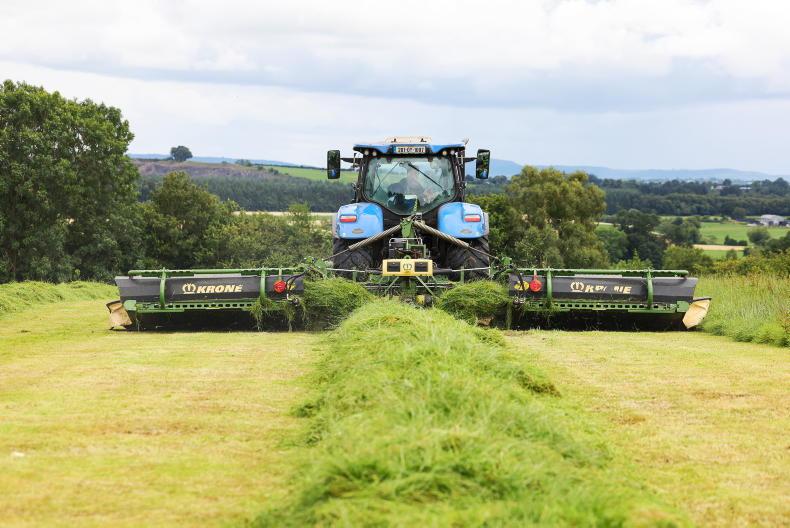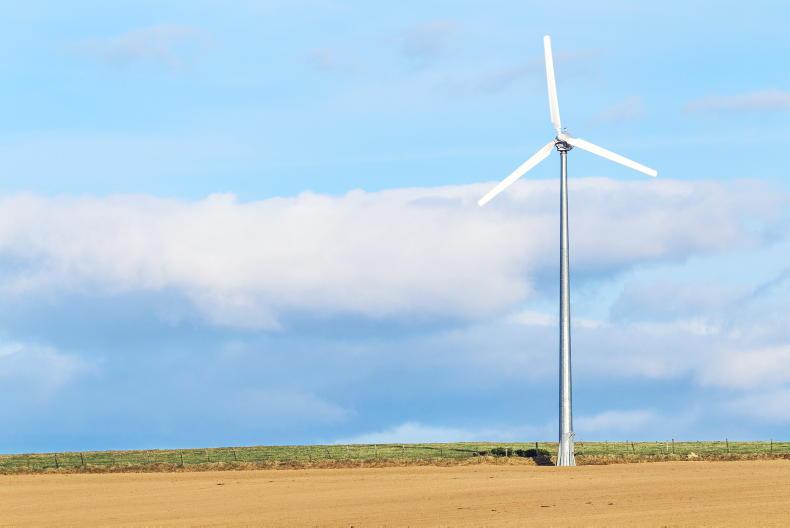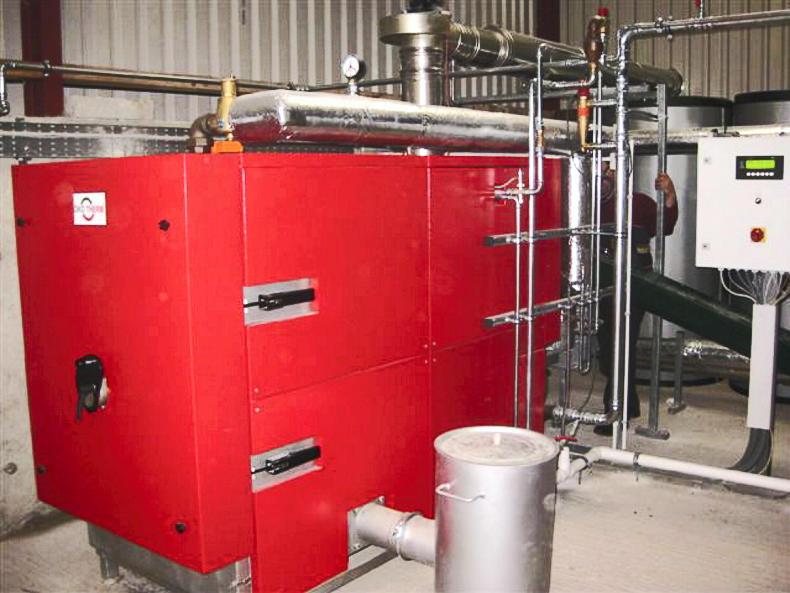The scheme, expected to commence from July 2018, intends to stimulate the market for renewable heating and therefore demand feedstock such as biomass, providing an opportunity for competitively-priced domestic production of bioenergy.
However, previous hold-ups and lack of information have resulted in stagnation, with potential customers putting off important buying decisions and investor confidence dented.
The RHI was due to go live over four years ago. It is now delayed while the Department of Communications, Climate Action and Environment (DCCAE) resolves compatibility issues with EU state aid rules.
Ireland’s heating market
Almost half of Ireland’s heating needs are in the residential sector, where oil is the dominant fuel. A domestic RHI scheme could support farmhouse heating projects, but this will not be available in the first phase.
Instead, the scheme will first target the industrial and commercial heat sectors.
Industry uses around 1.4m tonnes of oil equivalent (toe) of heat per year, of which 100ktoe come from renewables. Commercial and public services uses 750ktoe of heat energy annually. Gas is the dominant fuel in these sectors.
Agriculture and fisheries consume around 150ktoe of annual heat energy, which is exclusively oil-based. The poultry, pig and horticultural sectors should benefit from the planned RHI.
Shops, pubs and restaurants largely use electrical heating, and heat pumps are likely to offer them a better option than bioenergy. The RHI will include grants for heat pumps.
The main competition for biomass is gas. It is available in 24 of Ireland’s 32 counties and gas operators offer competitive sliding tariffs: the more you use, the less you pay per kilowatt hour (kWh).
Gas boilers are flexible and account for over 50% of new boiler sales. A biomass boiler costs four or five times more. For all these reasons, a high level of payment at the start of an RHI is needed to encourage conversion from gas to biomass.
Policy options for RHI
Ireland has already experimented with capital grants for biomass boilers, solar thermal and heat pumps. This all came to an end in 2008 and very little has happened since then.
The long, drawn-out process leading to the RHI started in May 2013. We had the draft bioenergy plan one year, followed by two public consultations in September 2015 and March 2017.
The main immediate driver for an RHI is to meet our renewable heat targets for 2020, but we need to think beyond this.
The proposed RHI will be a pay-as-you-go type of payment per kWh of metered heat. It will target the use of 200ktoe of renewables. The preference appears to be a 15-year heat output contract indexed on inflation. The scheme is expected to be available to eligible technologies installed since 2014.
The RHI consultation expressed a clear preference for tiering: the more you burn, the less you get paid.
This would avoid the situation which emerged in Northern Ireland, where heat producers were enticed to waste heat and get paid double the cost of their input fuel all year round.
The Republic’s RHI will have a tiered approach, with higher payments in the first hours or kWh of generated heat in the year.
Tier |
Lower Limit (MWh/yr) |
Upper Limit (MWh/yr) |
Biomass Heating Systems Tariff (c/kWh) |
Anaerobic Digestion Heating Systems (c/kWh) |
1 |
0 |
300 |
5.66 |
2.95 |
2 |
300 |
1,000 |
3.02 |
2.95 |
3 |
1,000 |
2,400 |
0.50 |
0.50 |
4 |
2,400 |
10,000 |
0.50 |
0.00 |
5 |
10,000 |
50,000 |
0.37 |
0.00 |
6 |
50,000 |
N/A |
0.00 |
0.00 |
Budget controls and degression
RHI payments will come from taxpayers’ money and the Government will want to ensure that the scheme’s budget is sustainable. Some technologies linked to renewable energy are likely to become cheaper as the years progress.
Degression will most likely be introduced to protect the RHI and allow it to prosper. This means that when a technology reaches a specific level of deployment, incentives will decrease for new applicants.
While all technologies were initially on the table, a cost-benefit analysis by the Sustainable Energy Authority of Ireland (SEAI) – who will ultimately run the scheme – showed that biomass boilers and heat pumps give the best bang for the Government’s buck in terms of greenhouse gas abatement and meeting our renewable targets.
This could well be at the expense of other technologies such as biomethane or solar thermal heating. To stay within budget and avoid excessive complexity, the scheme may introduce other technologies only in a phased way as was the case in England. There will also be rules around which heat uses are eligible for payments, sustainability criteria of the fuels, pollution levels and quality standards of the installations.
After many delays, the RHI should present a significant opportunity for business and eligible premises to generate additional income from the heat they need.
This will hopefully boost investor confidence, in turn lifting the biomass sector.
Example: how would it work?
A farmer is using a 900kW biomass boiler to provide the base load heat for more than 13,000sqm of broiler housing. Let’s assume that the boiler is in use for 4,000 hours per year.
Capital cost (boiler and infrastructure) about €580,000.Annual wood chip requirement of about 800t.At about €110/t, this equates to annual fuel cost of €88,000 (equivalent fuel cost for kerosene would be €180,000).Tier 1 RHI payment: 333.33 hours = 300,000kWh @ 5.66c/kWh = €16,980.Tier 2 RHI payment: 777.77 hours = 700,000kWh @ 3.02c/kWh = €21,140.Tier 3 RHI payment: 1,555.55 hours = 1,400,000kWh @ 0.5c/kWh = €7,000.Tier 4 RHI payment: 1333.35 hours = 1,200,015kWh @ 0.5c/kWh = €6,000.Tier 5 RHI payment: 0 hours = 0kWh @ 0.37c/kWh = €0.The total RHI payment is worth about €51,120 a year. Payback time is €580,000/€51,120 = 11.3 years.
This payback will improve if you factor in the lower cost of biomass. In the above example, the annual cost of oil at 6c/kWh is €216,000 compared to biomass costing 3.5c/kWh = €126,000. This would also give a fuel cost saving of €90,000 per annum. This improves the simple payback on the investment to 4.1 years.
Carbon savings: the emission factor for kerosene heating oil is 0.257 kgCO2/kWh, which represents 925t of CO2 saved annually in this example.
Read more
Exclusive: renewable heat scheme approved
The scheme, expected to commence from July 2018, intends to stimulate the market for renewable heating and therefore demand feedstock such as biomass, providing an opportunity for competitively-priced domestic production of bioenergy.
However, previous hold-ups and lack of information have resulted in stagnation, with potential customers putting off important buying decisions and investor confidence dented.
The RHI was due to go live over four years ago. It is now delayed while the Department of Communications, Climate Action and Environment (DCCAE) resolves compatibility issues with EU state aid rules.
Ireland’s heating market
Almost half of Ireland’s heating needs are in the residential sector, where oil is the dominant fuel. A domestic RHI scheme could support farmhouse heating projects, but this will not be available in the first phase.
Instead, the scheme will first target the industrial and commercial heat sectors.
Industry uses around 1.4m tonnes of oil equivalent (toe) of heat per year, of which 100ktoe come from renewables. Commercial and public services uses 750ktoe of heat energy annually. Gas is the dominant fuel in these sectors.
Agriculture and fisheries consume around 150ktoe of annual heat energy, which is exclusively oil-based. The poultry, pig and horticultural sectors should benefit from the planned RHI.
Shops, pubs and restaurants largely use electrical heating, and heat pumps are likely to offer them a better option than bioenergy. The RHI will include grants for heat pumps.
The main competition for biomass is gas. It is available in 24 of Ireland’s 32 counties and gas operators offer competitive sliding tariffs: the more you use, the less you pay per kilowatt hour (kWh).
Gas boilers are flexible and account for over 50% of new boiler sales. A biomass boiler costs four or five times more. For all these reasons, a high level of payment at the start of an RHI is needed to encourage conversion from gas to biomass.
Policy options for RHI
Ireland has already experimented with capital grants for biomass boilers, solar thermal and heat pumps. This all came to an end in 2008 and very little has happened since then.
The long, drawn-out process leading to the RHI started in May 2013. We had the draft bioenergy plan one year, followed by two public consultations in September 2015 and March 2017.
The main immediate driver for an RHI is to meet our renewable heat targets for 2020, but we need to think beyond this.
The proposed RHI will be a pay-as-you-go type of payment per kWh of metered heat. It will target the use of 200ktoe of renewables. The preference appears to be a 15-year heat output contract indexed on inflation. The scheme is expected to be available to eligible technologies installed since 2014.
The RHI consultation expressed a clear preference for tiering: the more you burn, the less you get paid.
This would avoid the situation which emerged in Northern Ireland, where heat producers were enticed to waste heat and get paid double the cost of their input fuel all year round.
The Republic’s RHI will have a tiered approach, with higher payments in the first hours or kWh of generated heat in the year.
Tier |
Lower Limit (MWh/yr) |
Upper Limit (MWh/yr) |
Biomass Heating Systems Tariff (c/kWh) |
Anaerobic Digestion Heating Systems (c/kWh) |
1 |
0 |
300 |
5.66 |
2.95 |
2 |
300 |
1,000 |
3.02 |
2.95 |
3 |
1,000 |
2,400 |
0.50 |
0.50 |
4 |
2,400 |
10,000 |
0.50 |
0.00 |
5 |
10,000 |
50,000 |
0.37 |
0.00 |
6 |
50,000 |
N/A |
0.00 |
0.00 |
Budget controls and degression
RHI payments will come from taxpayers’ money and the Government will want to ensure that the scheme’s budget is sustainable. Some technologies linked to renewable energy are likely to become cheaper as the years progress.
Degression will most likely be introduced to protect the RHI and allow it to prosper. This means that when a technology reaches a specific level of deployment, incentives will decrease for new applicants.
While all technologies were initially on the table, a cost-benefit analysis by the Sustainable Energy Authority of Ireland (SEAI) – who will ultimately run the scheme – showed that biomass boilers and heat pumps give the best bang for the Government’s buck in terms of greenhouse gas abatement and meeting our renewable targets.
This could well be at the expense of other technologies such as biomethane or solar thermal heating. To stay within budget and avoid excessive complexity, the scheme may introduce other technologies only in a phased way as was the case in England. There will also be rules around which heat uses are eligible for payments, sustainability criteria of the fuels, pollution levels and quality standards of the installations.
After many delays, the RHI should present a significant opportunity for business and eligible premises to generate additional income from the heat they need.
This will hopefully boost investor confidence, in turn lifting the biomass sector.
Example: how would it work?
A farmer is using a 900kW biomass boiler to provide the base load heat for more than 13,000sqm of broiler housing. Let’s assume that the boiler is in use for 4,000 hours per year.
Capital cost (boiler and infrastructure) about €580,000.Annual wood chip requirement of about 800t.At about €110/t, this equates to annual fuel cost of €88,000 (equivalent fuel cost for kerosene would be €180,000).Tier 1 RHI payment: 333.33 hours = 300,000kWh @ 5.66c/kWh = €16,980.Tier 2 RHI payment: 777.77 hours = 700,000kWh @ 3.02c/kWh = €21,140.Tier 3 RHI payment: 1,555.55 hours = 1,400,000kWh @ 0.5c/kWh = €7,000.Tier 4 RHI payment: 1333.35 hours = 1,200,015kWh @ 0.5c/kWh = €6,000.Tier 5 RHI payment: 0 hours = 0kWh @ 0.37c/kWh = €0.The total RHI payment is worth about €51,120 a year. Payback time is €580,000/€51,120 = 11.3 years.
This payback will improve if you factor in the lower cost of biomass. In the above example, the annual cost of oil at 6c/kWh is €216,000 compared to biomass costing 3.5c/kWh = €126,000. This would also give a fuel cost saving of €90,000 per annum. This improves the simple payback on the investment to 4.1 years.
Carbon savings: the emission factor for kerosene heating oil is 0.257 kgCO2/kWh, which represents 925t of CO2 saved annually in this example.
Read more
Exclusive: renewable heat scheme approved










SHARING OPTIONS